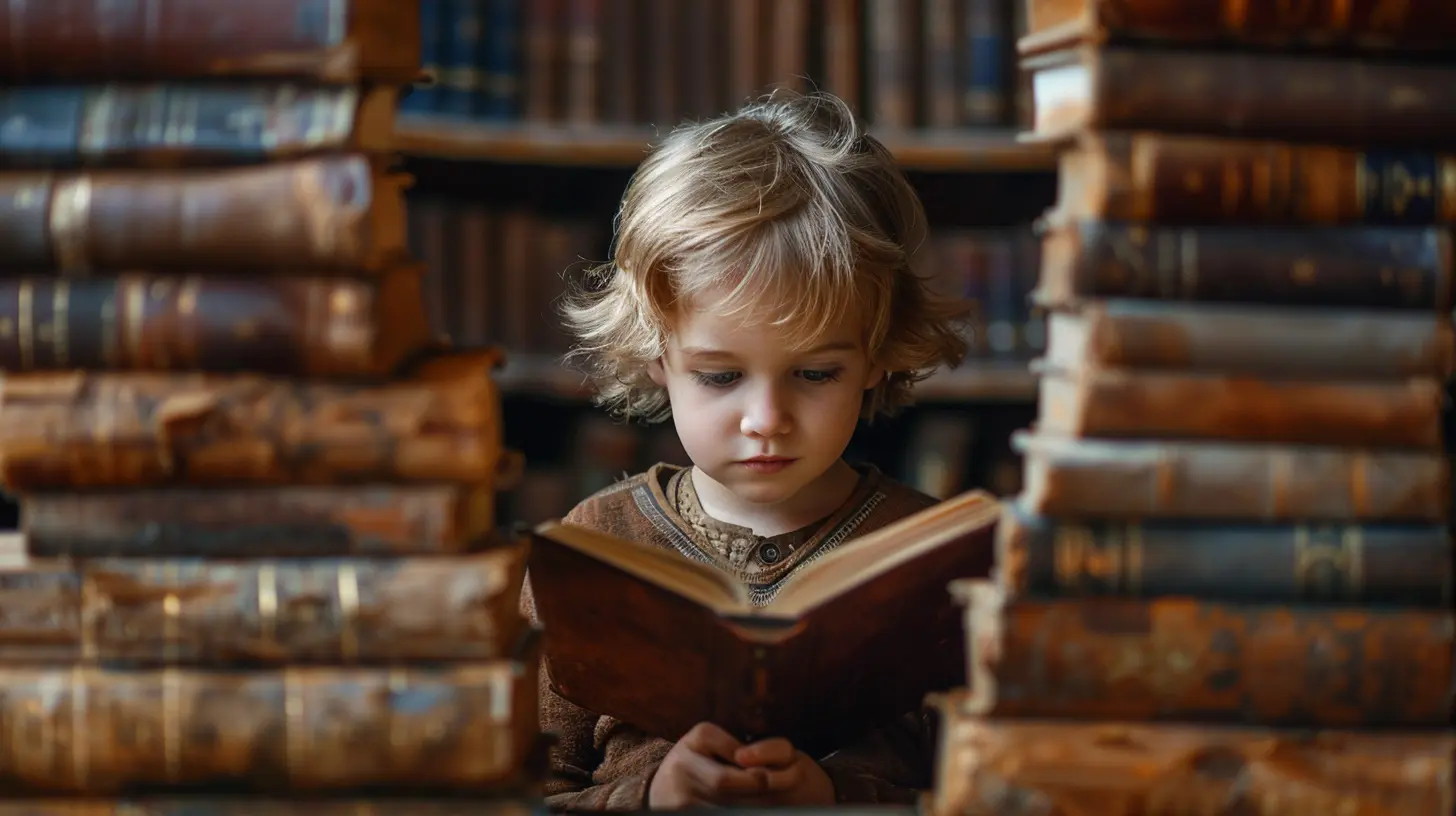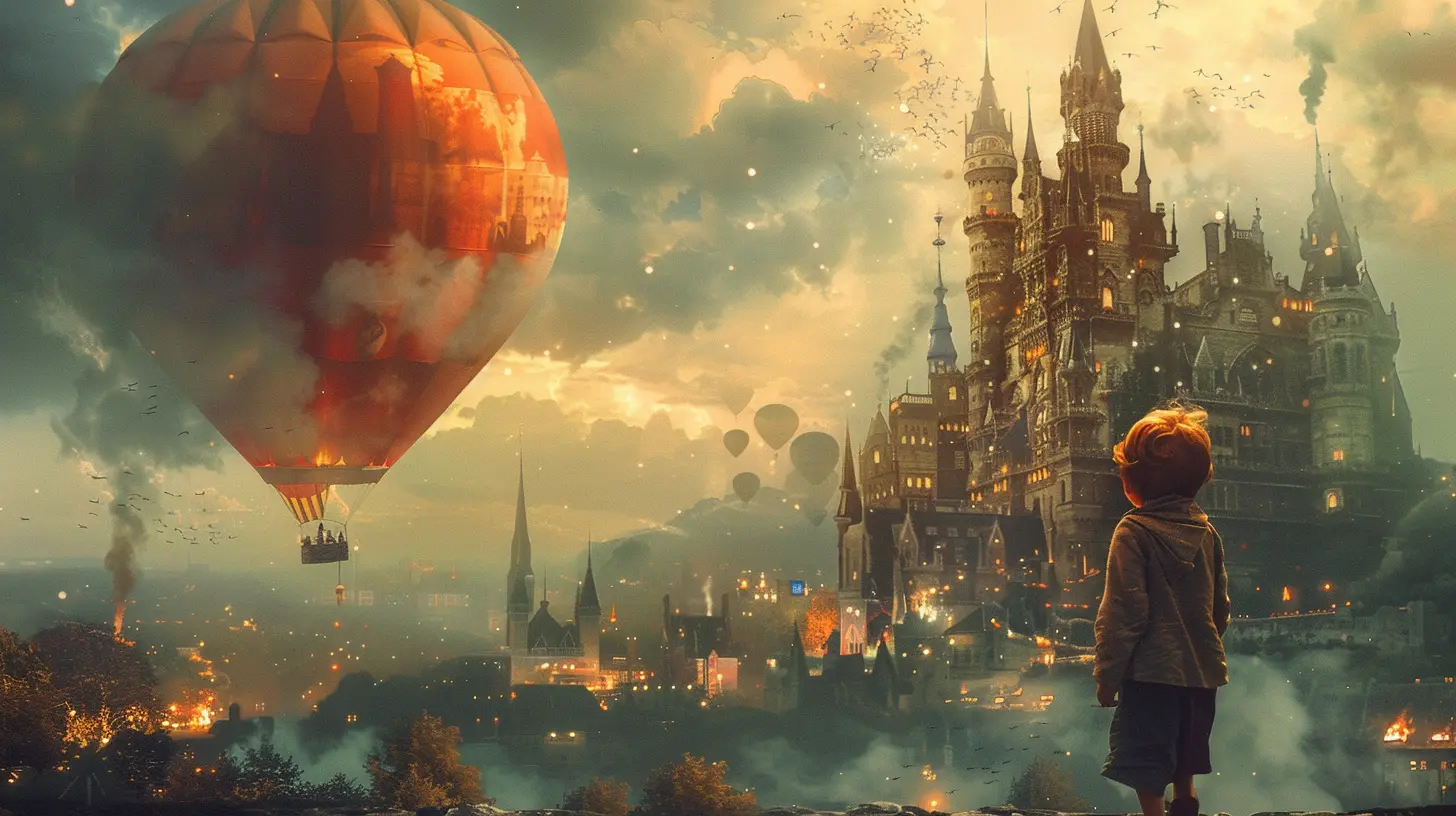How to Introduce Historical Fiction to Young Readers
27 May 2025
Do you remember the first time you picked up a historical fiction book? That feeling of being whisked away to another time and place, where you could almost smell the fresh ink on a quill or hear the clang of swords in the distance? Yep, that’s the magic of historical fiction! Introducing young readers to this genre can be incredibly rewarding, but let's be honest—it also has its challenges. After all, history isn’t exactly known for its flashy packaging. But with the right approach, you can turn young readers into lifelong fans of stories from the past.
In this article, I'll share some effective strategies for introducing historical fiction to young readers, making it an exciting, immersive experience. Let’s travel back in time and discover how to light that spark!

Why Historical Fiction?
Before we dive into the “how,” let’s talk about why historical fiction matters for kids. For starters, it brings history to life in a way that no textbook ever can. We’re talking about characters they can relate to, stories that make them feel real emotions, and sometimes even gripping mysteries or heart-pounding adventures.Historical fiction also has this amazing ability to put current events into perspective. By reading about the past, kids can better understand the present. They might develop more empathy for others, especially when they see how people from different times and cultures lived.
And, of course, don’t underestimate the educational value. Whether they're learning about ancient civilizations or recent history, kids can pick up key facts and lessons without even realizing it. Imagine learning history without the boring dates and endless names—sounds like a win-win, right?

Step 1: Start With Their Interests
One of the biggest mistakes you can make when introducing historical fiction to young readers is throwing a random book at them. Historical fiction spans centuries, cultures, and so many different themes. If your child loves adventure, why not start with a historical fiction book set in a time of epic battles or explorations? If they're into mysteries, find a story set during a historical period full of intrigue.Let’s say your child is obsessed with ancient Egypt. Books like "The Golden Goblet" by Eloise Jarvis McGraw can help them dive into that time and culture. Or maybe they’re fascinated by the idea of castles and knights? "Catherine, Called Birdy" by Karen Cushman might be a great starting point.
The key is to match their interests with the period or event. Once they're hooked on a compelling story set in the past, they'll naturally be interested in learning more about that time in history.
Subheading: Use TV Shows and Movies as a Bridge
This might seem unconventional, but hear me out. Kids nowadays are bombarded with media, and TV shows or movies can be a gateway drug to reading historical fiction. For example, if your child enjoys watching something like Hamilton or The Crown, you can use those interests to guide them toward books from the same time period.A child who loves pirates after watching Pirates of the Caribbean might be thrilled to read "Pirate Latitudes" by Michael Crichton. It’s about finding the right balance between entertainment and education—and you’d be amazed at how movies or shows can provide that bridge.

Step 2: Keep It Relatable
Historical fiction can sometimes feel a little distant to kids because the people in these stories lived so long ago. How do you make a child relate to someone living in the 1800s or earlier? Well, it’s all about finding universal truths. Whether it’s love, fear, friendship, or adventure, these are feelings that transcend time.For instance, books like "Number the Stars" by Lois Lowry tell stories of bravery and friendship in a way that resonates just as much today as it would have during World War II. Another great example is "The War That Saved My Life" by Kimberly Brubaker Bradley, which deals with themes of survival, family, and growth during wartime.
Kids naturally relate to stories about people their age going through struggles, triumphs, and growth—regardless of what century they’re living in. When children can see themselves in the characters, they’re more likely to stay engaged with the historical context.
Subheading: Encourage Empathy
One of the most beautiful aspects of historical fiction is how it encourages empathy. By reading about lives from different times, young readers learn to appreciate the struggles and joys of people vastly different from themselves. This opens the door to rich discussions about cultural differences, social justice, and even personal values.For instance, if your child is reading about the Civil Rights Movement through the novel "Roll of Thunder, Hear My Cry" by Mildred D. Taylor, ask them how they would feel if they were in the main character's shoes. Encourage them to think critically about these experiences and how they compare to life today.
Empathy is a powerful tool in helping kids not only understand history but also become more compassionate human beings.

Step 3: Make it Fun and Interactive
Let's face it, some historical fiction books can feel daunting, especially if they clock in at 300+ pages. If you're dealing with younger kids or reluctant readers, you might want to start smaller with shorter books or even historical fiction picture books.There are plenty of fun, interactive ways to make historical fiction more accessible for younger readers:
- Book and Activity Pairings: If the book is about the Revolutionary War, why not organize a mini reenactment at home or create a DIY quill pen for writing? This adds an active, hands-on element that makes history feel alive.
- Field Trips: Pairing the book with a visit to a museum or historical site can help bridge the gap between fiction and reality. Imagine reading "The Witch of Blackbird Pond" by Elizabeth George Speare and then visiting a historical reenactment site that recreates life in colonial America.
- Audiobooks: Some kids may be more inclined to listen than read—especially for longer, denser works. Audiobooks can make historical fiction feel like an epic adventure or dramatic tale unfolding in real-time.
Subheading: Create a Reading Challenge
Who doesn’t love a challenge? Create a family or classroom historical fiction reading challenge where every time a child finishes a book, they pick a sticker, a card, or even earn a small prize. You can even organize it by genres or time periods.For example:
- Medieval Europe: Read a book set in the Middle Ages.
- World Wars: Find a story set during either World War I or II.
- Ancient Rome: Get lost in a story set in the Roman Empire.
Challenges turn reading into a game, and before you know it, your child might be devouring entire series set in different historical eras.
Step 4: Choose Age-Appropriate Historical Fiction
Not all historical fiction is created equal when it comes to young readers. Some books delve into darker, more mature themes that may not be appropriate for younger audiences. Always ensure that what you’re giving your child matches their age group and emotional maturity.While plenty of historical fiction books are written for older teens or adults, there’s a treasure trove of options for younger readers too. Here are a few age-appropriate recommendations:
- For Early Readers (Ages 7-9): "Sarah, Plain and Tall" by Patricia MacLachlan – A gentle introduction to life on the prairies in the 19th century.
- For Middle-Grade Readers (Ages 9-12): "The Inquisitor’s Tale" by Adam Gidwitz – An action-packed, magical journey set in Medieval France.
- For Young Adult Readers (Ages 13+): "Salt to the Sea" by Ruta Sepetys – A gripping tale of survival during World War II.
You’ll know your child’s reading level and maturity best. But the ultimate goal is to find a book that is both challenging enough to be engaging and simple enough to make sense.
Subheading: Don’t Overwhelm Them
It’s important to remember that too much too soon could backfire. Starting with a 600-page epic might result in some serious eye rolls. Instead, ease young readers into historical fiction with manageable stories. Once they’ve devoured a couple of shorter or more engaging ones, they’ll be ready to take on the bigger, more complex books.
Step 5: Discuss the Real History Behind the Fiction
Here’s where the magic of historical fiction really kicks in. After finishing a book, sit down and talk about it with your child. Ask them what parts of the story they think really happened and what might have been made up. You could even look up the real historical figures or events together. This is where they begin to understand how fiction and history intersect.As they get deeper into the genre, they might even start exploring more non-fiction books on their own, curious to learn about the real people behind the stories.
Subheading: Let Them Research
Encourage your child to research the setting or time period of their book. If they're curious about a particular detail—like how knights really fought or what ancient Roman baths were like—help them look it up. This way, they start to see that historical fiction is more than just a story; it's a gateway to learning about the past.Conclusion: Making History Come Alive for Kids
Introducing historical fiction to young readers doesn’t have to be a chore. When done right, it can be a passport to adventure, a lesson in empathy, and a quick dive into history—all without leaving the couch. The key is connecting with their interests, choosing relatable characters, and making the entire process fun and interactive.Ultimately, you're not just introducing them to a genre; you're introducing them to the incredible power of stories that transcend time. And who knows? You might just create a future historian in the process.
all images in this post were generated using AI tools
Category:
Childrens BooksAuthor:

Tara Henson
Discussion
rate this article
3 comments
Asher Riley
Introducing historical fiction to young readers is a wonderful way to spark their curiosity about the past. Choose engaging stories that resonate with their interests, fostering empathy and understanding while igniting a lifelong love for history and reading.
June 19, 2025 at 4:49 AM

Tara Henson
Thank you! I completely agree—engaging stories can truly ignite a passion for history in young readers and help them connect with the past on a deeper level.
Kenna Nguyen
Introducing historical fiction to young readers can ignite their curiosity about the past. Start with engaging, age-appropriate books, and encourage discussions about the historical context. Incorporate related activities, like visits to museums or themed crafts, to deepen their understanding and make history come alive in a fun way!
June 4, 2025 at 3:15 AM

Tara Henson
Absolutely! Engaging young readers with age-appropriate historical fiction and interactive activities can spark their curiosity and bring history to life. Great advice!
Bear Warner
Introducing historical fiction to young readers can ignite their imagination and curiosity about the past. Engaging narratives combined with relatable characters foster empathy and a deeper understanding of history, making learning an enjoyable adventure.
May 27, 2025 at 4:56 PM

Tara Henson
Absolutely! Historical fiction captivates young readers by blending engaging stories with relatable characters, fostering empathy and curiosity about the past while making learning enjoyable.



